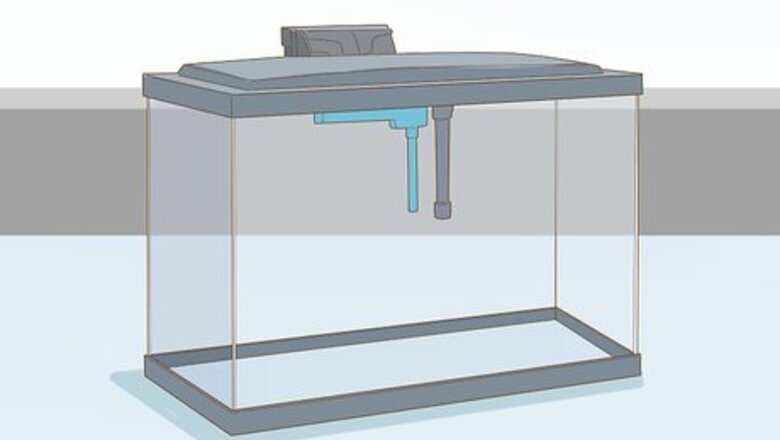
views
Setting Up an Angelfish Tank
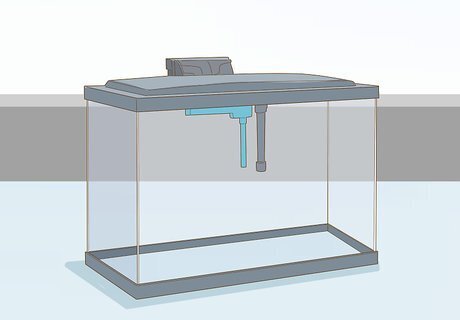
Choose the right size tank. Even if your angelfish is small now, it will grow. Angelfish can grow to be about 6 inches long and 8 inches tall. When selecting a tank, make sure it's at least 55 gallons in capacity. If you can afford a tank bigger than this, and fit it in your home, bigger is always preferred. Even if your angelfish does not grow to be very big, it's always better to have more space than necessary.
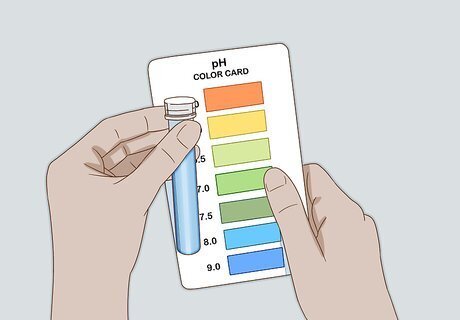
Maintain an appropriate pH level. You can measure the pH of your tank using a home testing kit, which you can purchase at most pet stores or online. You should wait 24 hours to test tap water, as the pH will change once it's been exposed to the air. Angelfish require a pH level between 6 and 8. If you need to raise your pH level, this can be done in several ways. Add crushed coral, which can raise the pH level. You can also add baking soda, shells, and chemical buffers sold at pet stores. If you need to lower pH levels, adding wood to the tank can help. You can also buy a chemical buffer made to lower pH.
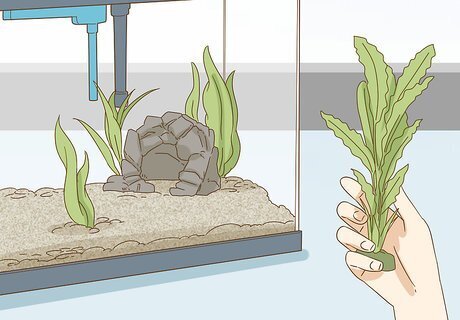
Add appropriate vegetation to the tank. Angelfish prefer a tank with a lot of substrate and vegetation. Decorate the tank appropriately to keep your angelfish happy. Rocks and hiding places are important for angelfish. Stop by your local pet store and pick out a variety of tank decorations. Try to add things like floating drift wood, as this reflects an angelfish's natural environment. Also, plants that stand vertically are great for an angelfish tank.

Get the tank at the proper temperature. Angelfish thrive at a temperature between 75 and 84 degrees Fahrenheit (24 to 29 degrees Celsius). You will probably have to install a heating system to keep the tank at this level. You can buy a heating system online or at your local pet store. Follow the instructions to set up the system and make sure the water is at the appropriate temperature. You should keep a thermometer in the tank. If the water gets too hot or too cold, adjust your heater accordingly.
Feeding and Caring for Your Angelfish
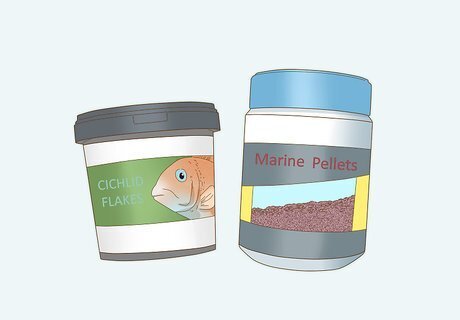
Select the right foods for your angelfish. Angelfish eat a diet primarily composed of meat products. Their main diet should be composed of cichlid flakes and pellets. However, supplement the diet with live foods. Angelfish may enjoy things like brine shrimp, white worms, bloodworms, meal worms, as well as small insects and crustaceans.
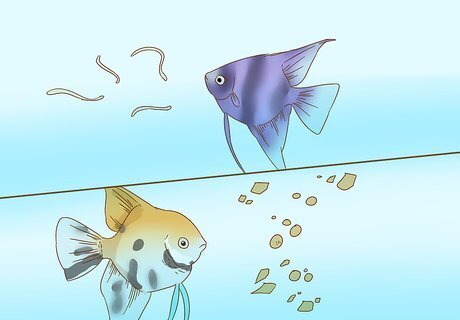
Observe your angelfish to determine how much to feed it. How much you feed your angelfish depends on a variety of factors, such as the fish's size or environment. You will have to observe your fish's eating habits and behaviors. There will be a trial and error period before you figure out precisely how much to feed your fish. You will also have to adjust feeding amounts as your fish grows. Younger angelfish will need more live foods than older ones. As you angelfish age, you can feed them more pellets and flakes than live foods. For general guidelines, younger angelfish need to eat 3 to 4 times a day. After they grow to full size, however, cut back the amount of food and stick to a strict schedule. Angelfish will overeat and become overweight if fed too much.
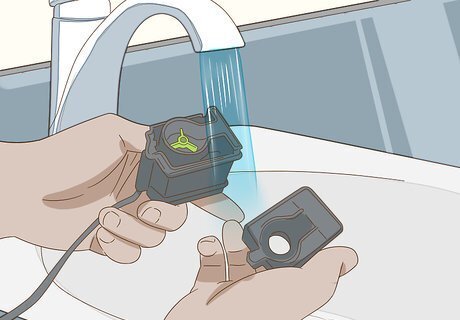
Clean out the filter each week. You need to make sure your angelfish's tank is clean. Each week, detach and clean out the tank filter. This will keep the tank from becoming contaminated, preventing your fish from becoming infected or ill due to bacteria. Use one to two cups of the existing tank water to clean the filter's sponge. Remove the water from the tank. Then, unplug the filter and remove it from the tank. Wash any gunk or grime from the filter. You should wear gloves, as the filter will be slimy. Then, use any leftover water in your bowl to give the filters and tubes from the filter a good scrub. You can then reassemble the filter and place it back in the tank.
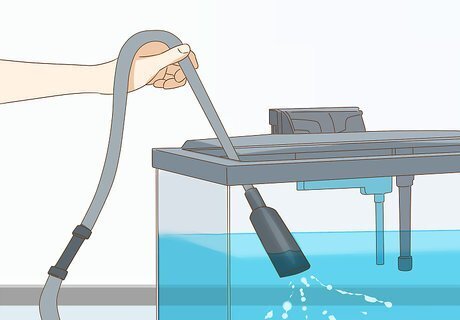
Change the tank water once a month. At least once a month, you will have to replace the water. You do not need to replace all the water in the tank. Instead aim to replace around 10-25% of the tank's water each month. You may have to adjust temperature and pH levels after changing the water.
Avoiding Problems with Your Angelfish

Use caution when placing angelfish with other fish. Angelfish may not do well with other fish. They tend to be territorial, and may attack and even eat smaller fish. If you introduce other fish, stick to other angelfish or fish of a similar size.
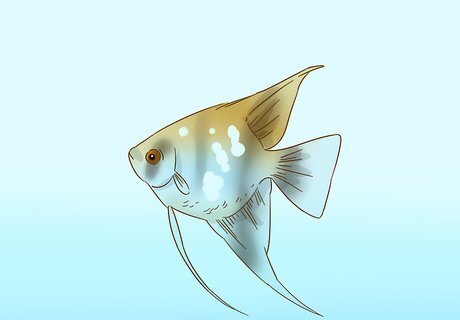
Watch for signs of disease. If an angelfish becomes diseased, you will need to talk to a vet or a pet store worker about treating the illness. This is especially important if you have other fish in your tank. One sick fish could infect the tank. Excessive slime and clamped fins can be a sign of a very serious disease called angelfish virus. If you suspect your fish has the virus, it may need to be put to sleep as there is no cure. White chalky feces, a lack of appetite, and weight loss can also indicate disease. There is also a common disease called ich that causes white spotting due to parasites. It can be treated easily with medication, so keep ich medication on hand when you have angelfish.
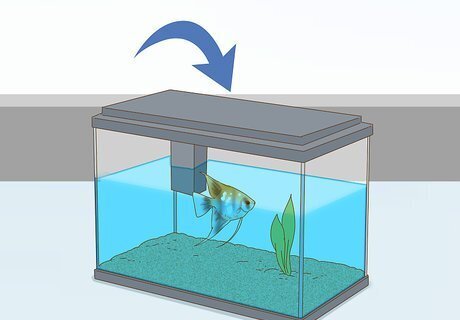
Quarantine sick angelfish. If an angelfish is showing signs of disease, remove it immediately and place it in a quarantine tank. Seek the care of a veterinarian to discuss treatment options or ask at a local pet store. Do not put the fish back into the tank until the signs of disease have passed, as you do not want disease to spread.

















Comments
0 comment